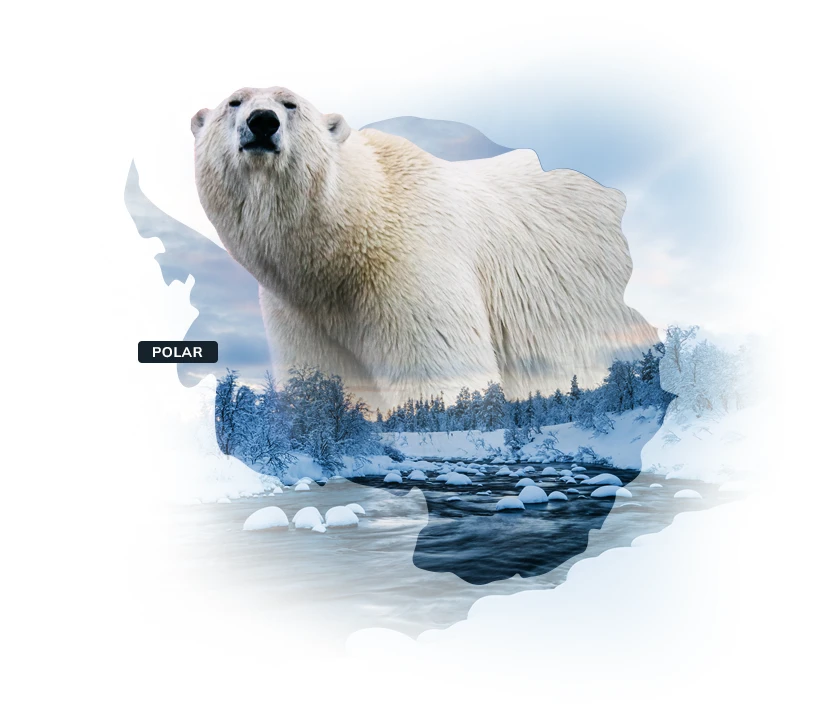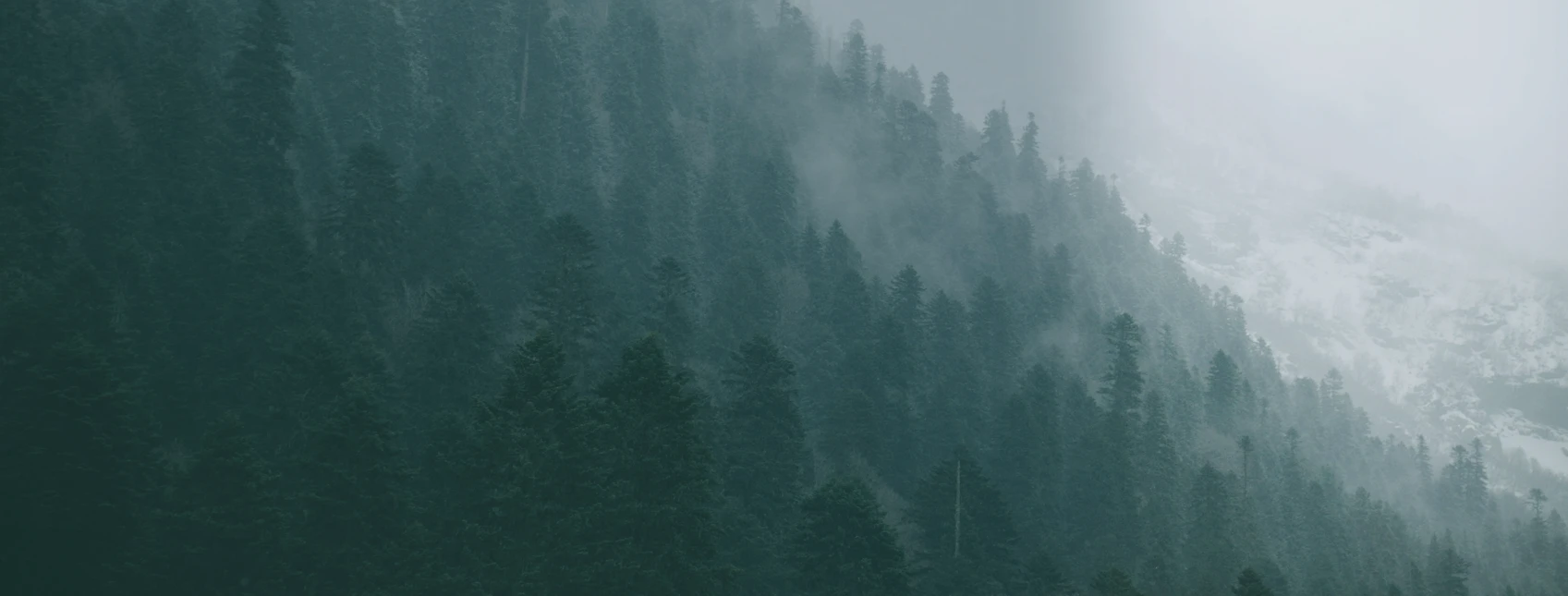Delve into the fascinating wonders and mysteries of Antarctica
For centuries, Antarctica has captured our imaginations. From the historic first explorers of the 1800s to the bold scientists of today, we continue to be captivated by the wonders held within Antarctica's icy plains.
As the world's last unexplored wilderness, Antarctica is shrouded in mystery, and as a land of extremes, it's also great at keeping its secrets.
The harsh conditions, freezing temperatures and barren landscapes make Antarctica inhospitable to humans. The frozen continent is about 1.5 times the size of the United States and 99 percent is covered in ice, making up 90 percent of all the ice on Earth.
Despite this, scientists have forged on, discovering blood red waterfalls, ancient fossils, peculiar natural phenomenon and incredible creatures. They've even managed to discover a world beneath the ice, from salty underground lakes to a huge mountain range hidden below.
We've rounded up 14 of the most fascinating mysteries held within the Great White Continent, click any of the links below to learn more.
|
2. Deep Lake 3. Blood Falls 5. Ancient Fossils & Rainforests 7. Singing Ice |
9. Mount Erebus 10. Southern Ocean 12. Antarctic Fungi |
Example Itineraries for Antarctica:
1. Underground lakes
It’s difficult to imagine anything beneath the thick layers of ice in Antarctica, yet scientists have discovered a number of underground lakes.
First uncovered in 1970 with radars, there are estimated to be around 400 lakes sitting under 3 kilometres of ice, in the regions that were explored.
Scientists believe the lakes were formed after the separation of Antarctica from Gondwanaland, the ancient supercontinent. The lakes don't freeze because of the pressure from the weight of the ice sheet.
Lake Vostok, discovered in the 1990s by Russian scientists, is the largest subglacial lake in Antarctica. It’s also the third-largest lake by volume in the world, lying 3.5 kilometres below the ice.
Scientists have since drilled deep holes into the ice to extract a sample of the lake water and one sample showed the water to be around -3ºC, despite being covered by ice over 20 million years ago.
In 2014, scientists had a major breakthrough at Lake Whillans, discovering a diverse and active eco-system of microorganisms in the lake , nearly a kilometre under the ice sheet.
These incredible species haven’t seen fresh air or sunlight for millions of years, yet they flourish, using methane and ammonium as energy to grow.
2. Deep Lake
Deep Lake is an inland lake in East Antarctica that has fascinated scientists for years. The lake sits 55 metres below sea level, with water salinity increasing as it gets deeper.
It’s salty waters are comparable to the Dead Sea and are ten times saltier than the ocean. This means the water does not freeze, despite temperatures reaching -20ºC at its deepest point.
The lake is practically inhabitable, with one of the least productive, yet most remarkable ecosystems in the world. Scientists have found four microbe species living in the waters, although it’s dangerous for most other animals.
Some penguins have been spotted swimming in the waters, but they can easily die as the lake is much colder than the ocean.
3. Blood Falls
In the McMurdo Dry Valley, a bright crimson, five-storey waterfall pours out of Taylor Glacier into Lake Bonney. It looks like a gush of blood from a wound in the ice, but scientists have recently discovered the cause behind this mysterious phenomenon.
The water that feeds Blood Falls was once a salty lake that is now cut off from the atmosphere due to the formation of glaciers on top of the lake.
The water is preserved 400 metres underground and has become even saltier over time - it’s now three times saltier than seawater and cannot freeze.
The saltwater is also extremely rich in iron and completely devoid of oxygen and sunlight. As the iron-rich water seeps through a fissure in the glacier and comes into contact with the air, the iron oxidises and rusts, staining the water a dark red colour.
This eerie sight is only accessible by helicopter or cruise ships visiting the Ross Sea.
4. Unusual creatures
Antarctica is a barren, icy desert with very little rain, fierce winds, and the coldest temperatures on earth (the coldest recorded temperature was -89.4°C); yet it’s also home to a myriad of unique wildlife.
It was previously thought that nothing could survive beneath the massive ice sheets, however scientists have discovered a number of unusual species that have adapted to the harsh environment.
There are microbes, crustaceans, colossal squid, leggy spiders the size of dinner plates, giant worms with shiny golden bristles and a large, sharp-toothed jaw.
You can even find see-through icefish. These strange creatures have large eyes and their internal organs can be seen through their translucent skin. The fish have antifreeze glycoproteins and cannot survive in warmer waters. They also don’t have any hemoglobin, a protein that makes our blood red.
5. Ancient fossils & rainforests

Antarctica previously was a warm region with rainsforests
Antarctica is an ancient land that has undergone some incredible transformations over millions of years. Before it became a frozen desert after the Ice Age, Antarctica was actually a warm region with rainforests and possibly even civilisations.
The theory developed from the discovery of fossilised wood, signs of tropical trees and leaf impressions that show the existence of rainforests in Antarctica.
Scientists have also found a ton of fossils from marine animals, birds and dinosaurs from the Cretaceous Period.
Among the smaller species, they've uncovered the fossilised forewings of a beetle species that lived between 14 and 20 millions years ago in a warmer climate, and tiny single-celled fossils that have been a great source of debate among scientists.
They've also found fifty-million-year old sperm cells on the egg case of a long extinct species of worm, an extraordinary discovery that scientists hope will lead to new evolutionary information.
6. Gamburtsev Mountain Range
Antarctica holds many secrets beneath its vast ice sheets - even a massive mountain range.
Hidden below a two to four thousand kilometre thick sheet of ice are the Gamburtsev Mountains. They stretch for 1,200 kilometres and rise to 3,000 metres, a third of the height of Mount Everest.
The mountains were named after Soviet geophysicist Grigoriy A. Gamburtsev, after they were discovered in 1958 by Russian scientists.
The scientists were traveling across Antarctica when they encountered a thin spread of ice and recorded abnormal gravity fluctuations, revealing the incredible wonder below.
Although we’ve never seen the mountains, scientists use radars to see the physical features of the mountains, while gravitational and magnetic readings allow them to study the mountains all the way to their base.
The Gamburtsev’s have long baffled scientists as to how they were formed and why they still exist. As the mountains are around a billion years old, they should have eroded away with the geological passing of time.
There are many theories about how they are still standing, predominantly that their may be a frozen mantle protecting the mountains from erosion.
7. Singing ice
 The Ross Ice Shelf The Ross Ice Shelf
|
A massive slab of ice in Antarctica is singing.
The Ross Ice Shelf is the largest ice shelf in Antarctica. It’s several hundred metres thick and covers an area over 500,000 square kilometres - around the size of France.
Scientists have recently discovered that the Ross Ice Shelf sings an eerie melody, caused by the winds blowing across the snow dunes. The winds create surface vibrations and almost non-stop seismic tones.
The vibrations aren’t audible to human ears and scientists use seismic sensors to listen to the mournful tune. The song was discovered by accident, after seismic sensors were installed on the ice shelf to observe other behaviours.
Scientists have since discovered that the song changes in response to the environment, such as melting or storms shifting the snow. They’re now using the song as a tool to monitor the ice shelf in real time, tracking its stability and vulnerability for collapse through the seismic humming.
8. The Giant Hole
A hole the size of Ireland opened in Antarctica in 2017. Known as a polynya, the hole is nothing new - except with a span of 78,000 square kilometres, it’s the largest hole to be observed since the 1970s, and the first one to open in 40 years.
Found in the Weddell Sea of the Southern Ocean, the polynya was formed due to the warmer, saltier water found in the deeper parts of the sea.
The warm water is pushed up by ocean currents, melting the ice on the surface. As the water comes in contact with the cooler surface water, it sinks again, only to be reheated and pushed back to the surface.
Scientists aren’t completely sure why the polynyas are created, but believe it may be marine mammals using the openings to breathe. They’re still working to understand the impacts of these strange, giant holes.
9. Mount Erebus

The spectacular views of Mount Erebus
Despite the freezing conditions, Antarctica is home to a number of volcanoes. There are four volcanoes on Ross Island, although all are inactive except Mount Erebus, which has actually increased in volcanic activity in the last 30 years.
Mount Erebus is an extreme natural wonder, with liquid magma and ancient lava lakes that have been boiling for around 1.3 million years. It’s the world’s southernmost active volcano and Antarctica’s second-highest volcano, towering to 3,800 metres high.
Scientists cannot often visit Mount Erebus due to the remote location and dangerous weather conditions, although a team of scientists managed to climb the volcano in 2013.
They hiked through snow, rocks and glaciers to the peak, where they found organisms living in the heat of the volcano.
They also discovered a number of ice caves with thriving microorganisms in the soil, and it is believed that these extreme creatures are some of the most unique in the world.
10. Southern Ocean

The Southern Ocean which surrounds Antarctica
The Southern Ocean was named the world’s fifth ocean in 2000. It’s is the fourth largest ocean in the world, surrounding the entire continent of Antarctica.
It plays a major role in driving global ocean circulation and also consists of the southern parts of the Pacific, Indian and Atlantic Oceans. With a maximum depth of about 7,300 metres, it’s nearly twice the size of the United States.
This mysterious ocean may hold the secret to carbon emission absorption. Scientists have found that the Southern Ocean has absorbed 15% of carbon emissions created by humans.
That’s an incredible amount although it won’t last forever, and scientists are working quickly to uncover how this process works.
Those who venture by ship to Antarctica will cruise through the Southern Ocean, witnessing the sheer power of the sea as you look out from the observation decks to catch your first glimpse of the Antarctic Peninsula.
11. McMurdo Dry Valleys

The thought of a desert usually conjures up images of hot, sandy plains, yet Antarctica is the largest desert in the world. It’s incredibly dry and windy, with as little as 50 mm of rain annually, while 99% of the continent is covered in ice.
In the remaining 1%, you’ll find the McMurdo Dry Valleys, where massive sand dunes reach up to 70 metres high and 200 metres wide. Although you can’t go sand-boarding down these dunes, they are an incredibly important site for researchers.
The Dry Valleys have a similar climate to Mars, and scientists believe the region could hold the secrets to life on other planets. However, the dunes are moving at an alarming rate, migrating at an average of 1.5 metres per year.
Scientists believe this is caused by climate change - as the atmosphere heats up, the ice melts and the dunes slip away. They are currently working quickly to unlock the mysteries of the dunes, before they are gone forever.
12. Antarctic fungi
Many microorganisms and extremophiles have been discovered throughout Antarctica, including an endemic species of fungi.
Although fungi typically flourish in warm, wooded regions, this Antarctic fungi survives in the freezing conditions by feasting on the centuries-old wooden huts abandoned by the first explorers.
Another type of fungi has been discovered gorging on the petroleum leaking from fuel containers left by explorers. Scientists are studying these fascinating creatures to see if the fungus could be used to clean up larger oil spills around the world.
13. Ancient Meteorites
Antarctica is a goldfield for meteorites. Although meteorites can fall all over the earth, they are easier to find in Antarctica as the cold, dry conditions preserve the rocky fragments.
The dark meteorites are also easier to spot on the stark white surface of the ice and they are almost always extraterrestrial rocks, as few rocks form naturally on the ice sheets of Antarctica.
The East Antarctic is particularly ripe for meteorite findings, as the massive ice sheet has stayed still long enough to have its top layers evaporated by sunlight and strong winds.
This reveals the older ice and huge concentrations of meteorites. There have been more than 20,000 extraterrestrial meteorite samples collected since 1976.
In 2013, a team of Japanese and Belgian scientists discovered the largest meteorite found in East Antarctica in 25 years. The extraterrestrial rock weighed an incredible 18 kilograms.
The team searched for meteorites for 40 days, finding 425 meteorites with a collective weight of 75 kilograms. The discoveries included a piece of the asteroid Vesta and a meteorite from Mars.
14. Aliens, Nazis and the Lost City

Antarctica is a breeding ground for mystery and it’s had its fair share of conspiracy theories over the years.
From elongated skulls and strange pyramids, to alien spaceships, bizarre structures and a giant staircase, many people believe that Antarctica once housed extra terrestrial life (or still does).
Every year, there are dozens of reported UFO sightings, while Google Earth has captured some unusual activity, said to be the work of aliens. It’s a hotspot for alien hunters, so keep your eyes peeled for any bizarre green lights in the sky!
The mystery of Antarctica continues deep below its surface, where no one has gone before. It is said that the Lost City of Atlantis is hidden beneath the kilometres of ice.
The city would have thrived when Antarctica was a warm, tropical region, and would've been buried after the Ice Age froze the continent.
It’s highly possible that a civilisation existed in Antarctica, but it's yet to be proven that the continent is the site of the fabled lost city. It’s also theorised that the Nazis used underground Antarctica as a secret hideaway and some people believe that Hitler fled there after the war.
Hitler did have a passion for the occult and he was searching for something in Antarctica - the Nazi Germans built a station in Antarctica - however it was abandoned 70 years ago after the crew were poisoned by polar bear meat.
Although the theory has been disproven, it doesn’t stop the speculation on what lies beneath Antarctica’s mysterious surface.
The Great White Continent is the most baffling and unexplained corner on Earth, and despite the dedicated efforts of scientists around the world, we may never know all of its secrets.
If this inspires you, get in touch with us today to start planning your Antarctica adventure now.














